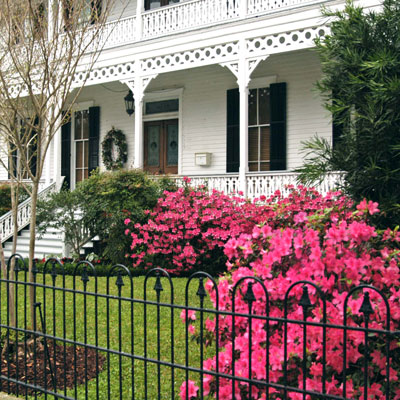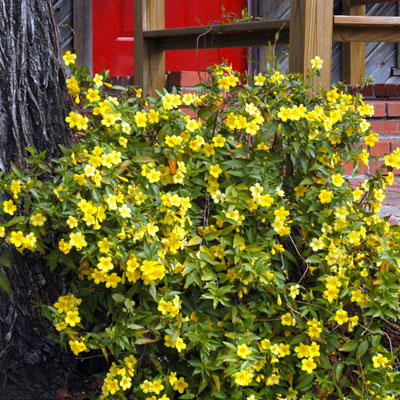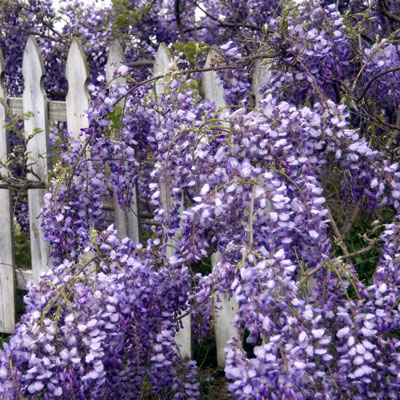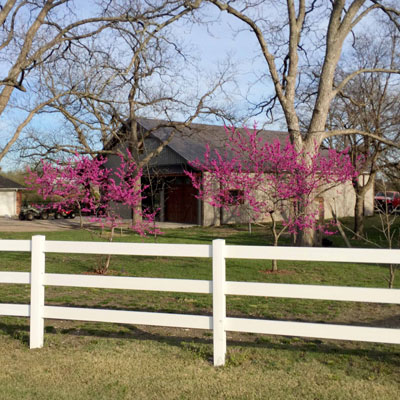Choosing Spring-Flowering Plants

Azaleas brighten spring landscape in eastern portions of Texas.
Before you invest in flowering shrubs, trees or vines for your landscape, there are some questions you need to be asking. (Please read them all – the specific ones come toward the end.)
1. What is its USDA Hardiness Zone? In fact, what is my own city’s USDA Hardiness Zone? (They need to be compatible.)
2. How tall and wide will it grow? (Will it fit the space I have for it?)
3. Does it need sun or shade?

Carolina jessamine is a refined, evergreen vine suited to sun or shade.
4. Is it adapted to my local soil, or will I have to make “heroic” soil changes?
5. Does it have any serious insect or disease problems I need to know about?
Specific questions about flowering shrubs, trees and vines:
6. When does it flower?
7. What color are the flowers, and will they be compatible with other plants I have blooming at that time?

Wisterias are strong-growing vines that require substantial support.
8. How long does it bloom?
9. Do the flowers have any aroma (good or bad), and will it attract bees? (Therefore, I wouldn’t use it near our door.)
10. How does the plant look when it’s not in flower? Many of our spring-flowering landscape plants look rather drab when they’re not blooming. You can still use them – just don’t position them in a place of prominence.

Redbuds are widely adapted in Texas. This is the burgundy-colored variety called ‘Oklahoma.’
My own personal preferences…
When landscaping against my house, especially in areas that are publicly viewed, I prefer evergreen shrubs that visually are a rock-solid A-grade of 92 in deference to a showy flowering shrub that may score 100 points while in bloom and 20 when not.
I can use annual color in the most prime parts of my garden for a full season of color, and I can back it up with deep, natural green evergreens like hollies, nandinas, junipers and others.
Hopefully those few thoughts will help you make an informed decision while you’re out shopping over the next several days.
